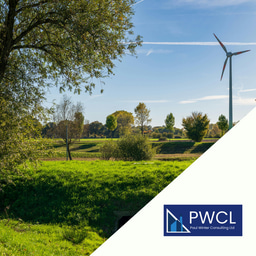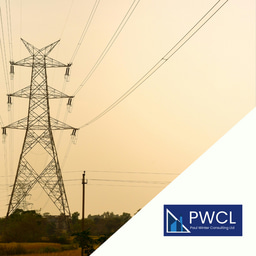We need investment to replace closing landfills

We currently landfill around 13 million tonnes of material which is suitable for energy recovery.
The majority of this landfill capacity is expected to close over the next 15 years but we are not investing in the new infrastructure we need to replace it.
This looming crisis for treatment capacity will be more acute in some areas than others, notably Scotland where a 2021 landfill ban will leave up to 1 million tonnes of waste without a home.
As landfills close more quickly in some regions than others, we will see waste travelling further around the country. This will push up waste management costs and open up even more opportunities for waste crime, which is already rampant in many parts of the UK.
Delivering new EfW plants cannot be done overnight. Lead-in times for new plants are three to six years. We must therefore act now to address this issue or else we will see capacity crises open up in some regions before the end of the current Parliament.
The Environmental Services Association has been discussing this pressing concern with Defra officials who have indicated that their internal analyses are consistent with published reports forecasting treatment under-capacity, such as those from Suez or Biffa.
Despite this, some politicians remain confused and perversely believe that we are actually building too much Energy from Waste infrastructure. Even the Minister has expressed concerns that some existing plants are cannibalising recycling efforts today. This is far from the truth.
To gain a greater understanding of the picture and to explain the source of differences between the industry consensus and outlier analyses, ESA has commissioned Tolvik to independently review the full range of forecasts produced by different operators and consultants.
Policy vacuum
Tolvik has taken all recent published forecasts, including those from Suez, Biffa and Eunomia, as well as unpublished analyses from Viridor, FCC, and SLR. These models and assumptions have then been normalised to generate agreed forecasts for residual waste arisings and expected infrastructure delivery.
In this way, Tolvik has attempted to isolate and identify the impact different recycling rates have on the treatment capacity gap we face out to 2030.
Tolvik has found that the recycling rates currently proposed under the EU’s Circular Economy Package are effectively the limit. At higher theoretical recycling rates than this there is unlikely to be a capacity gap based on current planned infrastructure.
But at all lower recycling rates there is under-capacity of waste treatment, and potentially a significant amount.
Current municipal recycling rates – including both household and household-like commercial sources – are around 50%. The industry consensus is that these will not go much higher than current levels without fresh policy intervention, particularly to help provide stronger end markets for recycled materials.
The latest draft EU Circular Economy Package calls for headline municipal recycling rates of 65%. This is generally recognised to be very ambitious.
To achieve these recycling levels would require around an 80% capture rate of recycled materials in the domestic waste stream, along with even higher capture rates for commercial recyclates. This would necessitate heavy and potentially costly intervention.
As mentioned before, the current capacity gap is around 13 million tonnes. What can we do to close this gap?
We can recycle more to reduce the amount of residual waste we need to manage. And we can invest in more energy recovery facilities to treat the residual waste which cannot be recycled economically.
These two types of activity have very different policy requirements for their delivery. More recycling requires active policy intervention, while more recovery requires policy clarity and stability.
Additional household recycling services would need to be funded, either by local or central government. The draft London Environment Strategy suggests that £100 million – £300 million would be needed for the capital’s boroughs to push household recycling rates up from 32% to 42%.
Extrapolating this, we could estimate that it would probably cost English authorities somewhere in the region of £1 billion to put in place the collection services to boost household recycling up to around 60%, which is the contribution we would probably need in order to hit an overall 65% municipal recycling rate. The obvious question which then arises is: how likely or achievable is this given pressures on local authority budgets and public services more generally?
Of course putting in place the services to collect materials for recycling is one thing. Finding outlets for all of this extra material will be quite another. And this is also the case for commercial recycling: where is it all going to go?
Extended producer responsibility
The need for robust and sustainable end markets for our recycled materials is greater than ever. China’s proposed adoption of tighter standards for material it will accept for import has brought this issue into sharper focus with around 4 million tonnes of currently exported paper and plastic at risk.
The answer to this conundrum has to be extended producer responsibility (EPR). EPR has the potential to act as both an additional funding stream to put in place new recycling services, and also as the vehicle to incentivise the use of recycled materials and foster stronger domestic end markets for our recyclates. It is vital that Defra uses its forthcoming Resources & Waste Strategy to implement the right sort of measures to make this a reality.
Defra’s strategy will need to be clear on the recycling levels it wishes to achieve, whether the Circular Economy Package targets or something else. And it will need to support those recycling levels with the robust policy interventions and funding required to meet them.
Policy requirements for energy recovery are different. Landfill tax rates are already at sufficient levels to make new facilities competitive.
Investment can therefore be delivered in theory, but in practice it needs two things: a strong signal from government that it recognises the need for more infrastructure; and long-term policy stability to persuade investors that the rug won’t be pulled out from under their feet partway down the line.
Crucially though, these new facilities can be delivered subsidy-free, enabling us to manage our non-recyclable waste more efficiently and contributing towards the UK’s energy security.
At the moment we have none of the above. There is a lack of intervention to drive up recycling rates. And there is a lack of stability to underpin new energy recovery infrastructure. Defra’s Resources & Waste Strategy provides an obvious opportunity to address this.
The nightmare scenario for the industry is that Defra commits to higher recycling targets but doesn’t back this up with strong policy support. If this occurs then we will set ourselves up to miss the target and, at the same time, won’t invest in energy recovery as this will be signalled as unwanted from a government perspective.
To avoid this we need clarity on long-term recycling levels, with extended producer responsibility and necessary funding to meet future targets. And we need certainty on the long-term policy framework for energy recovery.
If Defra delivers this in its strategy, then we can still avoid a treatment capacity gap. But without action it is clear that recycling rates won’t go much above current levels, which will leave us up to 6 million tonnes short of capacity by 2030. This is a scenario no-one wants to see become a reality.
This article originally appeared on recyclingwasteworld.co.uk in January 2018.





Please sign in or register for FREE
If you are a registered user on Energy from Waste Network, please sign in